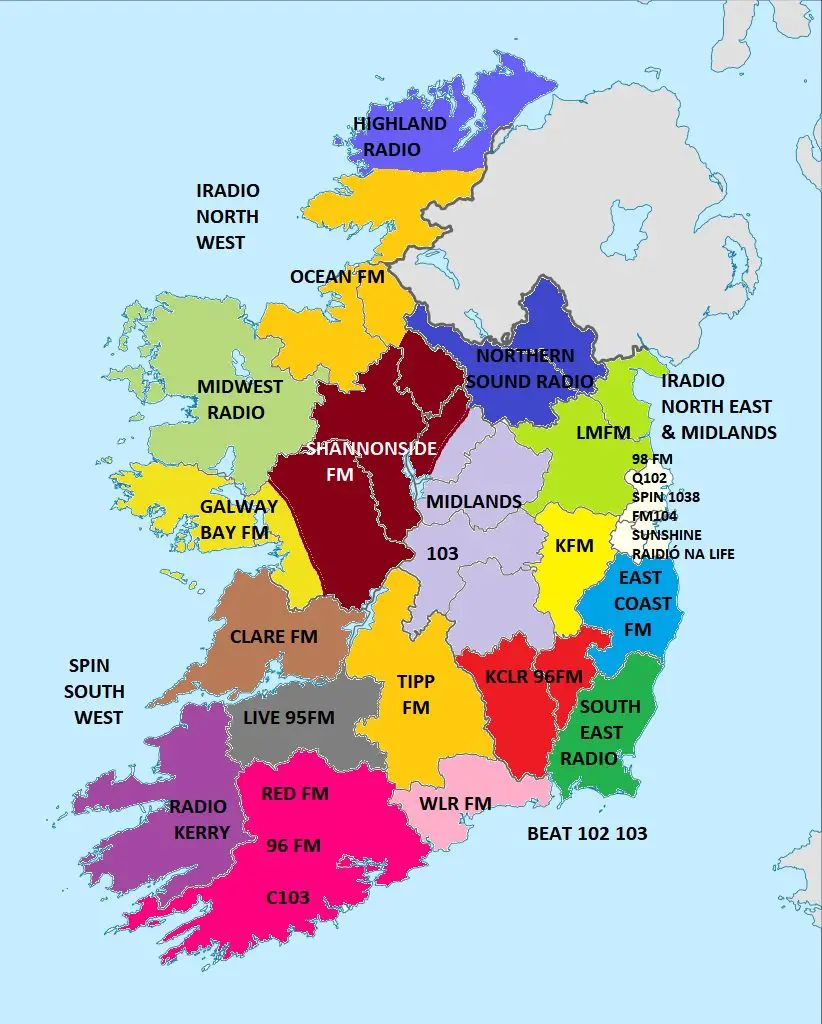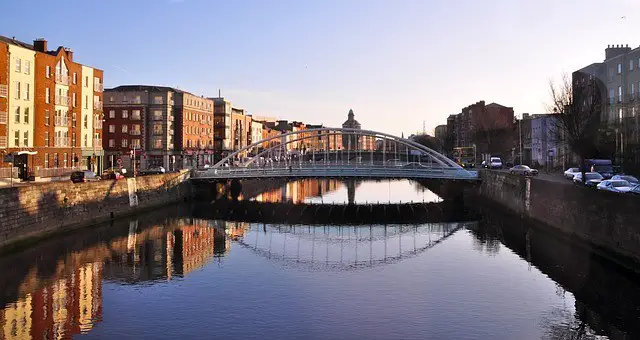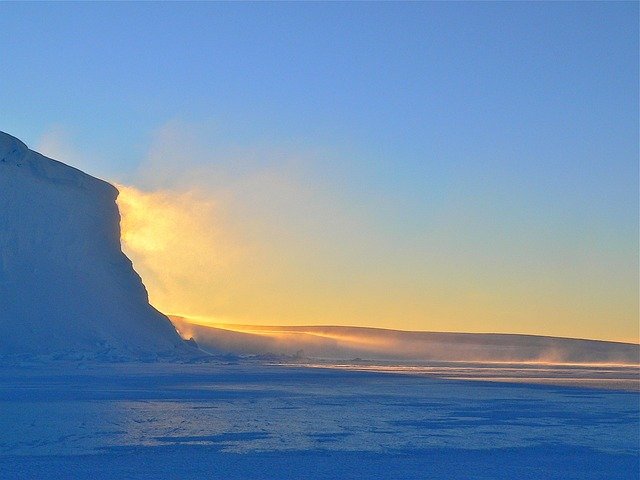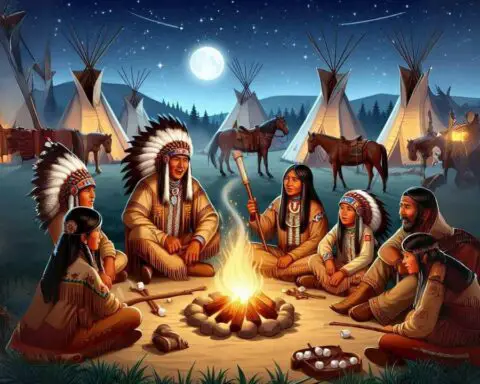Ireland is an amazing country with a rich landscape, history, and culture that is linked to the ancient Gaelic language. As an Island, it is the twentieth-largest island in the whole world. We have gathered much more Ireland Facts For Kids that will provide you with all the Ireland information that you need to know all about Ireland. You are going to learn about its name, location, size, history, timeline, geography, demography, economy, culture, food, famous places, people, and many other interesting facts about Ireland.
Ireland Facts For Kids
1. Is Ireland A Country
- Ireland is an island in the Northern region of the Atlantic Ocean.
- Five-sixth part of the island is a country, the Republic of Ireland with the official name “Ireland” and “Eire”, in English and Irish respectively.
- The resting part of the island is known as “Northern Ireland” and is part of the United Kingdom that has a status often described as a country, region, or province.

2. Official Name Of Ireland
- According to the constitution of the Republic of Ireland, the official name of the State is “Ireland” in English and “Eire” in Irish.
3. How Many Counties In Ireland – How Many Counties In The Republic Of Ireland
- As a whole, the island of Ireland has 32 counties.
- Out of 32, the Republic of Ireland has 26 counties, while Northern Ireland has 6.
- In ancient times, the entire island of Ireland was divided into four provinces named Ulster, Leinster, Connaught, and Munster, while each one was ruled by a separate king.
4. Where Is Ireland Located In The World
- Ireland is located in the Northwestern region of Europe along with the North of the Atlantic Ocean.
- It is located on the European continental shelf and is also part of the Eurasian Plate.

5. When Was Ireland Founded – When Did Ireland Become A Country
- Ireland became a country on December 29, 1937.
6. How Old Is Ireland
- The most prior evidence about the existence of humans in Ireland dates backs to 10,500 BC (12,500 years ago).
- However, the Irish Free State (The Republic of Ireland or Ireland) was established in 1922 and is about 97 years old.
7. Who Founded Ireland
- Ireland was not founded the way the United States of America was founded.
- The efforts of the leaders who organized and figured the Irish nationhood are spread over centuries.
- The main leaders were:
- Theobald Wolfe Tone (1763 to 1798)
- Daniel O’Connell (1775 to 1847)
- Charles Stewart Parnell (1846 to 1896)
- Patrick Henry Pearse (1879 to 1916)
- James Connolly (1868 to 1916)
- Michael Collins (1890 to 1922)
- Eamon de Valera (1882 to 1975)

8. How Big Is Ireland – Size Of Ireland
- The maximum length of the Ireland island is 486 km (301 miles) while its maximum width is 275 km (170 miles).
- The total area of the island is 84,421 km², which is nearly equivalent to the size of the US State of Indiana.
- Out of that, the area of the Republic of Ireland (Ireland) is 70,273 km² and of Northern Ireland is 14,130 km².
9. How Many Square Miles Is Ireland – Ireland Area
- The total area of Ireland island in square miles is 32,595 sq miles.
- Out of this, the area of the Republic of Ireland is 27,133 sq miles, while that of Northern Ireland is 5,460 sq miles.
- The total coastline is 2,797 km² (1,738 square miles).
How Long Is Ireland
- 486 km (301 miles) is the length of the island of Ireland at its maximum point.
10. What Is The Population Of Ireland – Population Of Ireland
- The total population of Ireland island is 6,572,728 according to the 2016 estimation.
- The population of the Republic of Ireland (Ireland) is 4,857,000 according to a 2018 estimation, while that of Northern Ireland is 1,876,695 according to the 2017 census.
11. Ireland Population Density
- The population density of Ireland island is 77.8/km² (201.5/square mile).
- This value for the Republic of Ireland (Ireland) is 69.1/km² (179.0/square mile) and for Northern Ireland is 133/km² (344.5/square mile).
12. Ireland Demographics – Ireland Race Demographics
- The following is the demographics of the island Ireland:
| Demonym | Irish |
| Population | 6,572,728 (according to 2016 estimation) |
| Population Density | 77.8/km² (201.5/square mile) |
| Population Rank | 19th |
| Languages | English, Irish, Ulster Scots |
| Ethnic Groups | White = 96.4%
Asians = 1.7% Black = 1.1% Others = 0.8% |
- The following is the demographics of the Republic of Ireland (Ireland):
| Demonym | Irish |
| Population | 4,857,000 |
| Population Density | 69.1/km² (179.0/square mile) |
| National Language | Irish |
| Official Languages | English, Irish |
| Ethnic Groups | Irish White = 82.2%
Other White = 9.5% Not Stated = 2.6% Asian = 2.1% Others = 1.5% Black = 1.2% Irish Travelers = 0.7% Other Black = 0.1% |
13. Ireland Statistics
- The following are the statistics of the Republic of Ireland (Ireland):
| Population Statistics | |
| Population | 4,857,000 |
| Population Density | 69.1/km² (179.0/square mile) |
| Growth Rate | 1.77% |
| Birth Rate | 13.7 births/1000 population |
| Death Rate | 6.5 deaths/1000 population |
| Life Expectancy | 80.19 years |
| Fertility Rate | 1.19 children born / woman |
| Infant Mortality Rate | 3.85 death / 1000 live births |
| The Population of age 0 to 14 years | 21.3% |
| The Population of age 15 to 64 years | 67.0% |
| The Population of age 65 and above | 11.7% |
| Economy Statistics | |
| Total GDP (Purchasing Power Parity (PPP)) | $382 billion |
| GDP Per Capita (PPP) | $79,925 |
| Total GDP (nominal) | $385 billion |
| GDP Per Capita (nominal) | $80,641 |
| Gini | 30.0 |
| Human Development Index (HDI) | 0.938 |
14. History Of Ireland – Ireland History Facts
- The history of Ireland dates back to 8,000 and 7,000 BC with the arrival and settlement of the first humans.
- About 1,200 BC, Celts arrived in Ireland and mixed with the earlier inhabitants of in later centuries, which resulted in the evolution of the Irish Gaelic language.
- In the late years of the 4th century AD, Christianity began to replace Celtic Polytheism.
- At the end of the 6th century, the main monastic Celtic Christian church was established on the island which greatly changed Irish society.
- In the late years of the 8th century, Vikings raid the island and then settled there led to a considerable cultural interchange.
- In the late years of the 12th century, the Norman Invasion marked the beginning of the 800 years of military and political involvement of the British in Ireland.
- The Ulster Plantation occurred in 1600 AD and the lands of Irish landowners were given to British families that divide the island, the division which exists today.
- In 1649, Oliver Cromwell (a British military and political leader) arrived in Dublin and had set destruction. He intensely hated the Irish Catholics and murdered them and also destroyed the Catholic Churches.
- Cromwell pushed the Irish and Catholics to far away, infertile and poor sides of Ireland, where a large number of them died of diseases and famine.
- The next 150 years in Irish history are filled with more bloodshed, as a large number of Irish people were killed in the conflicts between Irish and British.
- In 1798, a failed revolt of Irish people against the British occurred in the leadership of Wolfe Tone, who is today considered the father of Irish republicanism.
- In 1801, the rebellion was crushed and the Irish Parliament was destroyed through the Acts of Union 1800, Ireland was made a part of the new United Kingdom of Great Britain and Ireland.
- In 1829, the process of Catholic Emancipation or Catholic Relief occurred and the Catholics were granted full rights due to the hard efforts of Daniel O’Connell.
- Between 1845 and 1849, more than a million people died due to diseases and starvation in the disaster of the Great Famine while over a million run away from Ireland, mostly to America.
- In 1914, the Home Rule Act (Government of Ireland Act 1914) was passed due to which Ireland had to obtained self-government within the United Kingdom, however, due to the initiation of World War I the Act was suspended.
- In 1916, the Irish Republican Brotherhood (IRB) organized the Easter Rebellion (Easter Rise) and succeeded in diverting the opinion of the public against the British. The Physical Force Irish Republicanism (PFIR) come back to the frontline of Irish politics and exceeded the Home Rule movement.
- In 1919, the Irish War of Independence (the Anglo-Irish War) began due to which most parts of Ireland succeeded in obtaining independence from Britain in 1922 as the Free State of Ireland.
- However, due to the Anglo-Irish Treaty, six northeastern Irish counties (Northern Ireland) remained in Britain, and the island of Ireland was divided.
- Many people opposed the treaty and their resistance resulted in the Irish Civil War in which the force of the Free State was proved triumphant.
- In the history of Northern Ireland, the division of society and conflicts between the Catholics (Irish Nationalists) and Protestants (Unionists) is the most dominant issue.
- In 1960, these divisions exploded into the conflict known as the Troubles.
- With the deployment of the British Army to maintain law and order, the violence increased and lasted for the next 28 years.
- In 1998, successful peace was attained with the Good Friday Agreement (GFA) or Belfast Agreement.
15. Famine In Ireland Facts
- The Great Famine, which is also known as the Potato Famine or the Great Hunger, in Ireland happened between 1845 and 1849.
- It was a period of extensive hunger, diseases, and migration.
- Due to the Great Famine, over a million people lost their lives while another million people left Ireland and migrated to other countries.
- The primary cause of the Great Famine was a potato blight (Phytophthora infestans) disease.
- At that time, Ireland was highly dependent on potatoes as a staple food, and the disease infected most of the potato crops.
- Poor governance by the Britain and laws that were greatly founded in the favor of landlords further extended the famine.
- Due to the Great Famine, a 20 to 25% decrease occurred in the entire population of Ireland.
16. History Of Ireland Timeline – Historical Events In Ireland
| Year | Event |
| 10,000 BC | The Radiocarbon dating on the bones of the bear indicated the presence of Paleolithic humans in the County Clare. |
| 8,000 BC | Mesolithic humans migrated to Ireland. |
| 4,000 BC | Agriculture (farming crops and keeping livestock) started in Ireland. |
| 3,500 BC | In Boyne Valley, Neolithic people built a compound of chamber tombs by standing stones. |
| 2,000 BC | The technologies of the Bronze Age begin to arrive in Ireland. |
| 500 BC | During the Iron Age, Celtic culture, art, and language had greatly influenced Irish culture. |
| 140 AD | The Geographia written by Claudius Ptolemy is the oldest known written reference about the settlement (the ancient Irish settlement known as Eblana Civitas) in the Dublin area. |
| 431 AD | Christianity arrived in Ireland when Pope Celestine sent Palladius as the first bishop to Ireland. |
| 432 AD | Saint Patrick returned to Ireland. |
| 536 AD | A global climate event that caused the failure of crops growth and famine on the island. |
| 646 to 666 | A prevalent “Yellow Plaque” in the entire island was recorded by several sources. |
| 795 | Viking raids for the first time on the island |
| 852 AD | Vikings leader Ivar the Boneless landed the Dublin Bay along with Olaf the White and set up a fort. |
| 980 AD | The King of Dublin Olaf Cuaran disowned his throne to the Mid King Mael Sechnaill mac Domnaill after the defeat at the Battle of Tara. |
| 1014 AD | At the Battle of Clontarf, the armies of Irish king Brian Boru defeated the forces of Mael Morda mac Murchada and the Vikings. It marked the decrease of Viking power on the island. |
| 1167 AD | Dermot macMurrough requested Henry II of England for help in regaining his kingship. |
| 1171 AD | Henry II of England arrived at the Waterford city of Ireland and declared himself as Lord of Ireland. |
| 1175 AD | The Treaty of Windsor strengthened the influence of Normans in Ireland. |
| 1216 AD | Henry III of England issued the Great Charter of Ireland. |
| 1315 AD | Edward Bruce came to Ireland and reunited many Irish lords against the Anglo-Norman establishment. |
| 1494 AD | The Lord Deputy to Ireland of the Henry VII of England issued a statement (known as Poynings Law) according to which the Irish Parliament had no authority to pass any law without the prior approval of the English Parliament. |
| 1542 AD | The Crown of Ireland Act was passed by the Irish Parliament, according to which Henry VIII and his successors were acknowledged as the rulers of the Kingdom of Ireland. |
| 1642 AD | Charles I of England established the Irish Catholic Confederation |
| 1690 AD | The Battle of Boyne |
| 1760 AD | Battle of Carrickfergus |
| 1798 AD | Irish Rebellion against English in the leadership of Wolfe Tone |
| 1829 AD | The Catholic Relief Act was passed and Catholics were granted full rights. |
| 1845 to 1849 | The catastrophe of the Great Irish Famine occurred that led to the death of more than a million people while about more than one million people migrated to other countries. |
| 1886 AD | The Government of Ireland Bill 1886 (First Home Rule Bill) was introduced |
| 1893 AD | The Government of Ireland Bill 1893 (Second Home Rule Bill) was introduced |
| 1914 AD | The Government of Ireland Act was passed but suspended due to World War I. |
| 1916 | Easter Rising |
| 1919 | The Irish War of Independence began |
| 3 May 1921 | Northern Ireland was established |
| 6 December 1921 | The Irish War of Independence was concluded on the Anglo-Irish Treaty and the Irish Free State came into being. |
| 1922 | The Irish Civil War began |
| 1937 | The Constitution of Ireland was created and the state’s name was changed from the Irish Free State to “Eire” (in Irish) and “Ireland” in English. |
| 1955 | Ireland became a member of the United Nations |
| 1999 | The official currency of Ireland “the Irish pound” was adopted by the Euro |
17. Ireland Geography Facts – Ireland Geographical Features
The main geographical features of Ireland are:
- Ireland is situated in the Northwestern region of Europe and the northern part of the Atlantic Ocean.
- The total land area on the island is 20,230 square miles (52,395 km²).
- The highest elevation point is Carrauntoohil, which is 3,415 feet (1,041 meters) above the level of the sea.
- The coastal mountains surround the low central plains.
- There are many peninsulas, islands, headlands, and bays along the western coastline of the island.
- River Shannon is the longest river on the island, which is 360 km (240 miles) long.
- Lough Neagh is the largest lake in Ireland (381 km²).
18. Map Of Ireland For Kids

19. Ireland On World Map

20. Ireland Regions
- Ireland is divided into seven regions based on location and cultural differentiation. That is:
- The South-West Region includes the counties of Cork and Kerry.
- The South-East Region includes five counties, Carlow, Kilkenny, Waterford, Tipperary, and Wexford.
- The Shannon Region is composed of counties Limerick and Clare.
- The West Region consists of the counties of Mayo, Galway, and Roscommon.
- The East Coast and Midland Region include eight counties that are Longford, Laois, Louth, Kildare, Offaly, Meath, Wicklow, and Westmeath.
- The North West Region includes Donegal, Leitrim, Cavan, Sligo, and Monaghan.
- Northern Ireland consists of the counties of Antrim, Down, Armagh, Fermanagh, Tyron, and Londonderry.
21. Ireland islands
- Ireland is itself a beautiful island in the Northern Atlantic Ocean.
- However, there are many islands in Ireland, the largest of which (by area and population) are:
| Island | County |
| Achill Island | Mayo |
| Great Island | Cork |
| Inishmore Island | Galway |
| Gorumna Island | Galway |
| Valentia or Valencia Island | Kerry |
| Arranmore or Aran Island | Donegal |
| Inch Island | Donegal |
| Lettermore Island | Galway |
| Inisheer Island | Galway |
| Bere or Bear Island | Cork |
| Lettermullen Island | Galway |
| Rathlin Island | Antrim |
| Clare Island | Mayo |
22. Countries Close To Ireland
- Ireland is situated in the North-Western region of Europe.
- Great Britain is the closest country to Ireland. The North Channel and Irish sea separate both countries.
- On the Southside, France (Brittany region) is the closest country to Ireland. The Celtic sea lies between both countries.
23. Capital Of Ireland
- The capital of Ireland is Dublin.
24. Facts About Dublin Ireland
- Dublin is the capital of Ireland and is also the largest city in Ireland.
- The name “Dublin” is a phrase of the old Irish Gaelic language, which means the “Black Pool”.
- Celtic-speaking people established Dublin in the 7th century AD, while Vikings further expanded it as the “Norse Kingdom of Dublin” in the 9th century AD.
- In entire Europe, Dublin has the largest percentage of the youngest population with about 50% citizens below the age of 25.
- In Dublin, the daily production of the pints of Guinness is 10 million.
- In 2018, the Globalization and World Cities Research Network (GaWC) listed Dublin city as a “Global City” and keeps them among the world’s top 30 cities with the ranking of “Alpha-”.

25. Ireland People
- The people of Ireland belong to the Celtic nation, which is an ethnic group of common ancestry, culture, and identity indigenous to the island of Ireland.
- Most of the recorded history of Ireland describes Irish people mainly as Gaelic people.
- When the Anglo-normans and British conquered parts of Ireland in the 12th and 16-to-17th centuries respectively, a large number of Low Scots and English people came and settled in Ireland.
- The island is consists of the Republic of Ireland (free state) and Northern Ireland (part of England).
- In Northern Ireland, the people are of various identities like Irish, Northern Irish, British, and their combination.
26. Ireland Culture Facts
- The culture of a region or country includes its traditions, rituals, language, literature, art, music, cuisines, folktales, and sports.
- Most of the recorded history of Ireland reveals that its culture is Gaelic.
- The Anglo-Norman, British, and Scottish cultures have a great influence on Irish culture.
- In today’s Ireland, remarkable cultural differences can be seen between the people of Protestant and Catholic backgrounds, and between the settled and travelers people of population.
- As people from Ireland emigrated on a large scale during the period of the Great Famine, the festivals and features of Irish culture exist globally, like the celebration of Halloween and Saint Patrick’s Day throughout the world.
27. What Type Of Government Does Ireland Have – Ireland Government
- Ireland is a member country of the European Union and has a liberal democracy with a parliamentary system.
- The President of Ireland (Uachtarán na hÉireann) is the head of the State who is popularly elected by the vote but has a ceremonial place in the government.
- The Prime Minister (Taoiseach) is the government head, who is indirectly elected but has actual political power.
- There are three branches of the Irish government, that is:
a. The Executive
- This branch is consists of the President, Prime Minister, Deputy Prime Minister, and Cabinet ministers.
- According to the Irish constitution, the number of Cabinet ministers would be no more than 15, and they should be the members of the Parliament.
b. The Judiciary
- The judiciary branch is consists of the Supreme Court, High Courts, and all the other lower courts. This branch is independent of the Executive and Legislature branches of the government.
c. The Legislature
- The Legislature branch is made up of the President and two parliament chambers; the Senate (Seanad Éireann), and the Lower House (Dáil Éireann), which have 60 and 185 members respectively.
28. Ireland Economy Facts
- Ireland’s economy is a contemporary knowledge economy.
- High-tech industries, life sciences, trade, investment, and financial services industries are the backbone of the economy of Ireland.
- On the Index of Economic Freedom, Ireland is on the 6th number of countries that have a free economy.
- In the lists of global GDP per Capita, Ireland is ranked 5th by the World Bank ranking of 175, and also 5th by the International Monetary Fund (IMF) ranking of 187.
- According to a study by The Economist in 2005, the people of Ireland have the best quality of life in the world.
29. Ireland Gdp – Republic Of Ireland Gross Domestic Product
- The GDP of Ireland is $333.7 billion in 2017.
30. Facts About Ireland Food
- The Irish cuisine and foods were greatly influenced by the British after its invasion in the 17th century.
- The catastrophe of the Great Famine had also altered the cooking style and foods.
- Potato has a special place in the Irish foods and cuisines, as it was the only food in the 18th century affordable by the poor people.
- Some of the traditional foods of Ireland are:
- Irish Stew
- Bacon and cabbage with potatoes
- Boxty (traditional potato pancake)
- Coddle (bacon, potato, and sausage)
- Colcannon (mashed potato, butter, and cabbage or kale)
- Soda bread of soda farl.
31. What Is Ireland Known For – What Is Ireland Famous For – Famous Things In Ireland
- Some of the things Ireland is famous for:
- Saint Patrick
- Guinness
- Rugby
- Literature
- Science and achievements
- Culture and heritage
- Oldest places
- Music
- Traditional foods
32. Historical Sites In Ireland
- The top historical sites in Ireland are:
- Newgrange in the County of Meath
- Hill of Tara is also in County Meath
- Rock of Cashel (also known as the Saint Patrick Rock or Cashel of the Kings) in the County Tipperary
- Céide Fields in the Mayo County
- Clonmacnoise in the Offaly County
- Jerpoint Abbey in the Kilkenny County
- Kilkenny Castle in Kilkenny County
- Leaf Castle in the Offaly County
- Blarney Castle in the County Cork
- Skellig Michael in Kerry County
33. Best Places To Go In Ireland – Places Of Interest In Ireland
- Some of the best places to go in Ireland are:
- The Cliffs of Moher
- Killarney National Park
- Sligo Town
- Boyne Valley
- Kilmainham Gaol in Dublin
- Dingle
- The Rock of Cashel
- Blarney Castle
- Galway City
- The Aran Island
- Limerick
- Glendalough
- Cork
- Burren National Park
- The Ring of Kerry
34. Castles In Ireland
- Some of the most popular and best castles in Ireland are:
- Kilkenny Castle
- Slane Castle
- Carrickfergus Castle
- Blarney Castle
- Cahir Castle
- Bunratty Castle
- Ashford Castle
- Doe Castle
- Saunderson Castle
- Rose Castle
- King John’s Castle
- Clonyn Castle
- Tyrrellspass Castle
- Nugent Castle
- Carlow Castle
35. Northern Ireland Facts For Kids
- Northern Ireland is located in the Northeast region of Ireland island.
- It is part of the United Kingdom and has the status of a country.
- The Capital of Northern Ireland is Belfast which is also its largest city.
- The main religions are the Protestants and Catholics.
- There are 11 districts in Northern Ireland.
- Northern Ireland is famous for the Giant’s Causeway, and Breweries (Guinness, Smithwicks, Harp Lager).
36. Southern Ireland Facts For Kids
- Southern Ireland is the largest part of Ireland island and is known as the Republic of Ireland.
- It is an independent state with the official name of Ireland (English) and Eire (Irish).
- It came into being in 1922 after the partition of the island under the Government Act of 1920.
- Out of 32 counties of the island, Southern Ireland has 26 counties.
- It is composed of the five-sixth of the area of the whole island.
- Dublin is the capital of Southern Ireland.
37. Fun Facts About Ireland For Kids – Interesting Facts About Ireland
- Ireland is a north-western European country, which is well known for its economy, culture, food, and a large number of castles.
- The present constitution of Ireland was established in 1937.
- In Ireland, the longest name of a place is “Muckanaghederdauhaulia”.
- Due to the Irish Great Famine, Ireland lost about one-eighth part of the whole population. The pre-famine level of the population has not recovered till today.
- The O’Connell Bridge in Dublin is the only bridge in the entire continent of Europe that has equal length and width.
- The Trinity College of Dublin produced many celebrated graduates like Jonathan Swift, Oscar Wilde, and Bram Stoker (the writer of Dracula).
- The origin of Halloween and Saint Patrick’s Day festivals in Ireland, which are globally celebrated by Christians.
- The well-known Titanic was built in Belfast, Northern Ireland.
- Newgrange (the passage tomb in Ireland) is 5,000 years old, which is older than the ancient Great Pyramid of Giza.
- Ireland is the world’s only country that national symbol is a musical instrument, the Harp.










